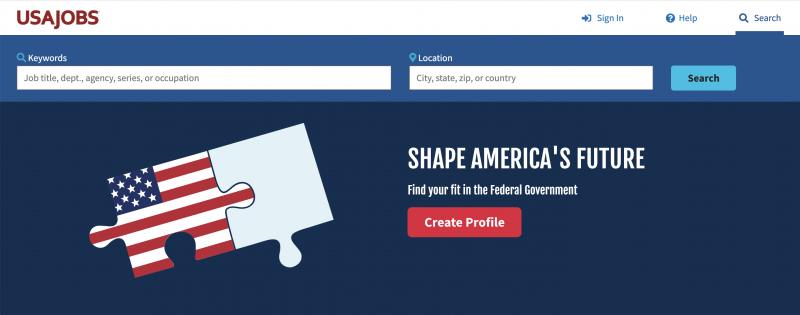If you’ve turned off your computer in frustration following bouts of log-in errors, website freezes or other bugs on USAJobs, you’re not alone. The promise of a new and improved USAJobs has made headlines for years and yet, despite improvement, the service still ranked dead last among federal agencies in Forrester’s 2019 Customer Experience Index.
The index, which ranks customer experience (CX) qualities and how they drive customer loyalty, is not just an expression of customer qualms or dissatisfaction. Forrester created this index to help organizations understand how their customers are perceiving their interactions with the organization to gain insights on how CX drives revenue.
“The CX index isn’t just about how much people like you,” said Rick Parrish, Principal Analyst at Forrester. “The CX index measures how well the experience drives loyalty.” It’s based on about a dozen digital and non-digital factors that contribute to CX in both public and private sector organizations.
The Office of Personnel Management, which runs USAJobs, has long tried to tweak the job board to improve customer loyalty and experience. In 2016, USAJobs Program Director Michelle Earley told GovLoop that the website would better serve their audience as it implemented more easily understood language and a personalized experience, among other initiatives.
Then, in 2018, Earley spoke to GovLoop about the integration of USAJobs and the Open Opportunities platform, a program that offers professional development and knowledge sharing opportunities among federal agencies. Even more recently, USAJobs announced it would ease the hiring process for individuals re-entering the workforce via instructional tools and sample resumes. Still, however, their CX ranking failed to rise.
None of the federal agencies included in the Forrester index saw major strides. While some saw slight rises or dips, there were no major trends toward overall improvement for federal CX.
Parrish blamed this lack of growth for federal agencies, including USAJobs, on increasing expectations from consumers.
“It’s a race between two turtles, the slow pace of rising customer expectations and the slow pace of CX quality improvements,” said Parrish. “If both turtles are walking at the same place, then it remains stable. You need to get your turtle to go faster.”
Parrish pointed out that no matter what your mission is, you need customers to do what you ask of them and improving CX can help make that happen. In other words, it’s not just about having a good score on the CX index. In government, a citizen having a valuable experience with an agency can push them to use optional services and, ultimately, shape conventional wisdom surrounding that agency.
The full analysis of government agencies is still forthcoming, but the Forrester report for USAJobs and other agencies to improve CX. Focusing on emotion, taking a customer-first approach, securing data and optimizing procedures are all ways that USAJobs could improve their score.
Demonstrating value and respect for citizens throughout their experience with government is rising to prominence as a tactic for improving CX. Parrish praised the Department of Veterans Affairs as an agency that puts emotion front and center throughout their citizens’ experiences. Government agencies are often uncomfortable with engaging constituents’ emotions, but unless a citizen is having their emotional needs met, they’ll have poor experiences with the public sector.
If USAJobs wants to win the turtle race, there are practical utilities they’ll need, like a higher budget, additional resources and better organization. But for first steps, they can start by putting human emotion front and center.
Photo Credit: USAJobs




Great piece, Katie! I am eager to read the full analysis, but I’m sure USAJobs’s poor performance (again) comes as no surprise to most folks familiar with it. Here’s to hoping Earley and her team are ahead of the curve with more improvements in the pipeline.